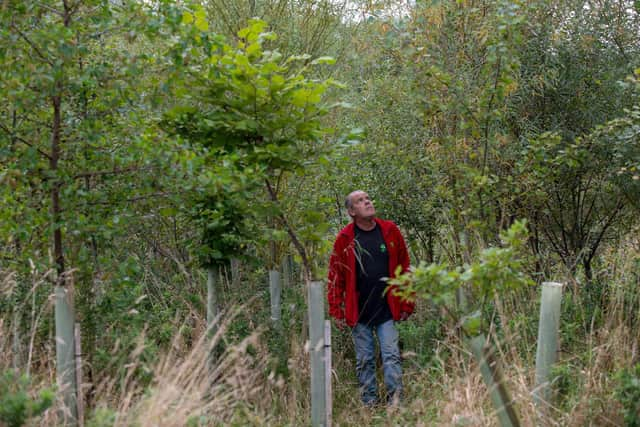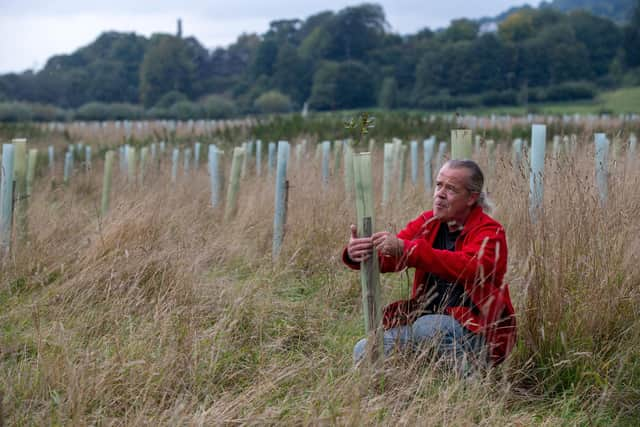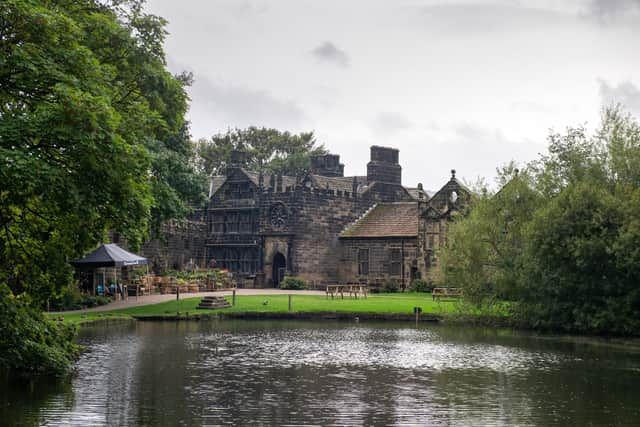How trees in the fields of 17th century Bradford manor house could help fight flooding
The floodplain, on the banks of the River Aire near East Riddlesden Hall, is home to a wealth of wildlife and soon more than 4,000 trees.
Under a National Trust project, and with the help of local people, it is hoped the 'wet woodland' could help clean air in Keighley while building a thriving habitat.
Advertisement
Hide AdAdvertisement
Hide AdNick Chuck is ranger at the National Trust site, with a 17th century hall at its centre built by the wealthy Halifax clot hier James Murgatroyd in 1642.


These fields, prone to flooding in winter, have traditionally been used for grazing and as an overflow car park, but in the Boxing Day floods of 2015 fencing was washed downstream.
Now, with 1,000 trees planted earlier this year, and plans for up to 2,500 more, it could mark a turning point to ease flood risk.
"I'm a big fan of trees," said Mr Chuck. "Planting trees is the best wildlife habitat by far. We're hoping it can be really nice, in time. This doesn't have to be lost land."
Advertisement
Hide AdAdvertisement
Hide AdSand martins are known to nest in the river's banks, while otters have been spotted from the hall. There are two pairs of barn owls, and more than 50 species of birds.


Last Sunday Mr Chuck saw a little egret. There are so many deer they have rubbed the bark from a half dozen trees.
"I've been here 18 years, we've never needed protection from deer before," he smiled.
It is hoped the new woodland will encourage even more species to the area. Native saplings, such as birch, hazel, alder, blackthorn and hawthorn, have been planted to create a wet woodland, with 'scrapes' or seasonal ponds, that can hold back water when it floods.
Advertisement
Hide AdAdvertisement
Hide AdSuch woodlands can provide a buffer against pollutants, while sequestering carbon, but are becoming rarer with development and invasion by species such as Himalayan balsam.


Mr Chuck said: "As well as releasing oxygen, these trees are using and storing huge quantities of water.
"They are helping to defend locations downstream, protecting them from flooding. Others can come see what can be done, with land sustaining ponds."
Visitors are now encouraged to visit the site, as this week marks Great Big Green Week. A tree trail runs from the hall along the river, with interpretation boards.
Advertisement
Hide AdAdvertisement
Hide AdWith the first 1,500 trees already put to ground with the help of community volunteers, the National Trust is preparing for the next stage of planting early next year.
To Mr Chuck, who came to the site as a gardener 18 years ago before going on to become ranger caring for pathways and landscapes , this is just sensible care.
"I always try to plant a few, every year,” he said. “Planting 1,000 this year is super. I'm hoping for many more."